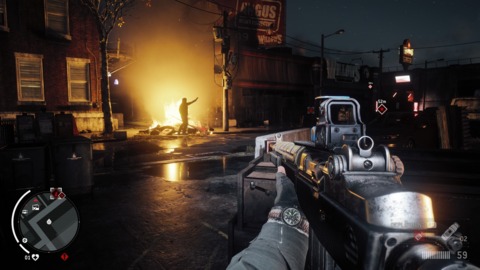
The North Koreans are overwhelmingly powerful, but if only the resistance had Benjamin Walker, then everything would be different.
This is the contradictory engine that drives most of Homefront: The Revolution, and it encapsulates the game’s failed attempt to treat bleak problems of an alternate history America with simple, mechanical solutions. Homefront is a game that's more interested in telling you how grim things are than it is in showing you what makes your circumstances so dire, and rarely finds way to include you in its key moments of storytelling.
And throughout its roughly 25-hour campaign, all of these structural and narrative failures are coupled with frequent bugs and hackneyed game design.
I can’t help but want to start this with my own “if only” statement, too. If only Homefront executed on its core ideas. After all, it’s a game with two totally solid premises: First, a speculative fiction setting in which North Korea (re-imagined as a technological, economic, and military powerhouse) invades and occupies the United States of America. Second, an open-world, first-person shooter that attempts to bring to an urban environment some of what the recent Far Cry games have done in tropical and mountainous regions.
Both of these premises have potential. Though it might seem uniquely suited to a sort of boilerplate, rah-rah nationalism, there’s a place in my heart for alternate history stories about besieged Americans trying to survive while figuring out what the hell it means to be “American” anyway--Man in the High Castle proved that this sort of fiction has legs over 50 years ago. And, you know, “What if Far Cry, but in a city” seems like a sound enough idea to build a game around; urban environments may not have the same attraction for some as Far Cry’s idealized, “exotic” locales, but cities offer their own sort of beauty.
Unfortunately, Homefront fails to execute on either of these premises, offering only a glowering and inconsistent narrative and monotonous action spread over a game twice as long as it should be. Worse, these two goals collide head first, creating a game that is confused at best and virulent at worst.
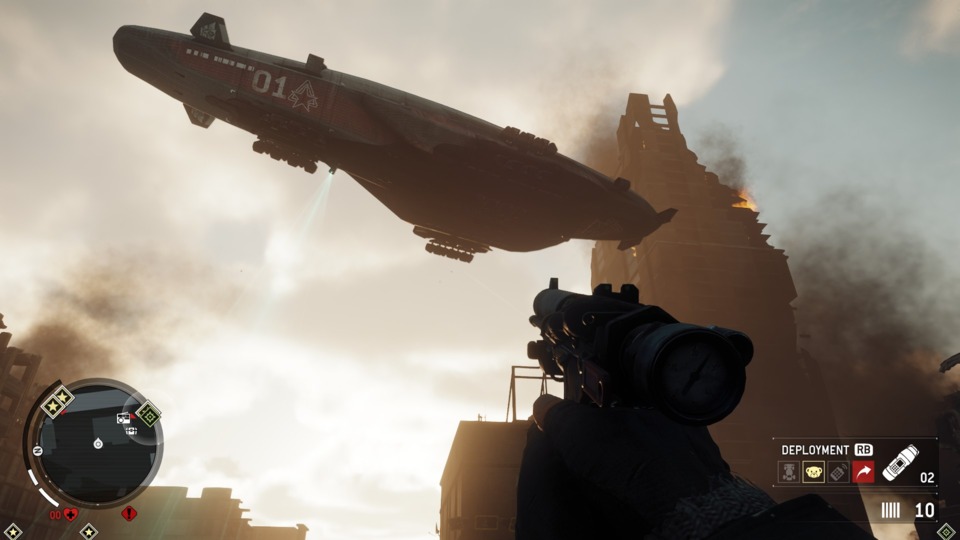
It starts like this: What if the computing revolution sprouted out of North Korea in the late 1970s, with the Apple-like Apex Corporation eventually becoming a massive player in worldwide consumer, industrial, and military technologies? Driven bankrupt by foreign wars and poor economic policy, the US goes deep into debt to a booming North Korea, and when they fail to pay down their loans, North Korea comes to collect. America readies a defense, but there’s a problem: Our military hardware all runs on Apex technology, and Apex technology has a backdoor built into it, allowing the North Korean government to flip a switch and win the war. Whoops.
Things pick up years later in an occupied Philadelphia where “The Resistance” struggles to expel the Korean People’s Army from the city. Philadelphia is split into distinct zones (with a fairly hefty load as you travel between them). Half of the areas are “red zones,” bombed-out battlefields where the resistance fights openly against the KPA. The other half are “yellow zones,” occupied residential districts where regular folks try to carry on life in the presence of police brutality, american collaborators and… well, that’s about all we’re given really. Homefront never stops to paint a picture of civilian life under the KPA. What little detail it provides about the setting mostly comes through dry journal entries and laughable graffiti scattered across the game. But things are bad, Homefront insists, very bad. And the Resistance needs help.
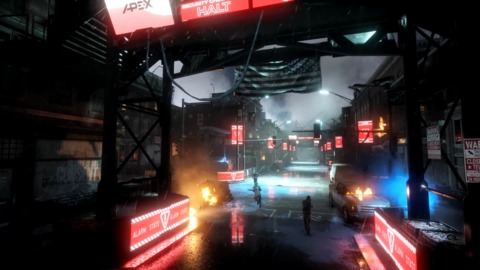
Enter Benjamin Walker, an imprisoned soldier with the gift of gab and the key to driving the North Koreans out, or at least that’s what you’re told. As Ethan Brady--painfully silent Resistance grunt--you don’t really see much of Walker in action, and the plan for revolution is never explained further than “Once we rescue him, Walker will inspire people to rise up.” Why is this absurd? Because Homefront goes out of its way to emphasize the disparity in power between the Resistance--whose weapons are nearly taped together--and the KPA--whose Star Destroyer-esque airships dot the skyline.
This disparity is central to Homefront’s general design, too, at least for the start of the campaign. The KPA holds onto their territory with armed patrols, surveillance drones, and the aforementioned airships, which cast down glowing beams of blue-green light in search of any Resistance operatives. Health regenerates at a snail’s pace and healing items are limited, so open-air gunfights end quickly (and not in the player’s favor). Open conflict is deadly, and you learn early to avoid it whenever possible.
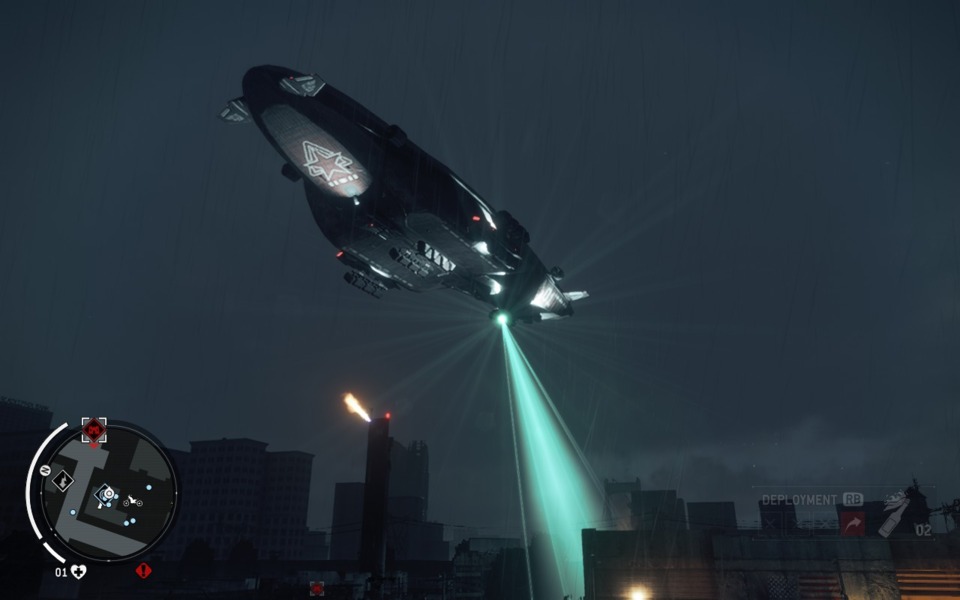
When combat encounters do erupt, Homefront has a few things going for it. First, the sound design is good and weighty, with hefty rifle reports cutting through increasingly tense ambient drone soundtrack. Second, when the game is running smoothly, combat can look fantastic--especially when the day-night cycle offers particularly cinematic lighting. Third, Homefront does a good job of illustrating the need for the Resistance to be flexible by offering weapons that can be modified (on the fly) in ways that go beyond attaching a scope or a silencer. Each gun is based around a core receiver which can have different fittings attached to transform the weapon in major ways. So what is first a silenced pistol can be transformed into an submachine gun, in the case that things get hairy. Or maybe you transform your mid-range battle rifle into a “Freedom Launcher” that launches explosive red, white, and blue fireworks (perhaps the only example of “so-goofy-it’s-good” design in the game). I eventually settled into a favored set of guns, but I still appreciated the novelty and quality of the game’s armory.
On paper, this should all be great, and sometimes it really does come together to produce something unique. Imagine: You’re deep into KPA controlled territory, sprinting from building to building, heading towards one of the numerous side missions (called “strikepoints”) while staying out of sight as best as you can. You’ve managed to silently take down a few solitary guards, and have posted up on the second floor of a devastated brownstone so that you can safely recon the next length of land. There’s an armored patrol slowly rolling down the boulevard between you and your target, and that’s why you don’t notice the chittering of the drone behind you until it’s too late, its blue lights turning red in alert. It flies away before you can knock it out of the sky, and then you hear the distorted horn howling from above: The airship is here, and that means the KPA’s troops are on their way. You pick a few off with your marksman rifle, but their numbers are mounting quickly. A sniper round finds your shoulder, and you realize you’re out of medkits. Time to run.
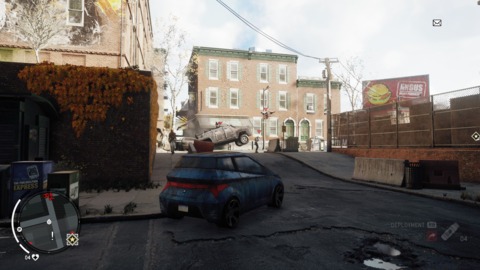
Moments like this are the proof that the premise can work… but they’re also all too rare. What happens more often than not is this: You run safely from one strikepoint to another. When you get there, you climb a few scaffolds or shoot a few guards, and then move to the objective point and press (and sometimes hold) the X button. Then you’ve done it, you’ve taken over the outpost or hacked the transmitter or destroyed the supply cache. Progress is even flatter in the game’s Yellow Zones, where you slowly build support among occupied population of Philly. After stabbing soldiers enough and tuning in enough hidden stereos into the revolutionary radio station, you’re told to deliver a rousing speech to the citizens. So you walk up and hit the X button again and… watch a cutscene of civilians hitting empty cars with baseball bats. Again, Homefront is more interested in telling you that a revolution is happening than showing you take an active, meaningful part in it. Success almost always feels this flat. There’s never the triumphant joy found in other, similar games that comes from taking over an outpost without being spotted or making it through a hard firefight through the skin of your teeth. Instead, things just sort of deflate once the action comes to a stop.
Poor interface design ensures that the action itself never feels dynamic for too long, either. Pulling up the map, an objective list, or any other in-game menu is a clunky endeavor that slows things down considerably. Tagging enemies requires you to bring up your phone, switch to the camera, and hope that you can pass the center of the lens over the enemy model directly: Any obstruction, even see-through mesh fences, prevent the camera from acquiring the target.
The bugs are even worse: Sometimes, mission objectives fail to load into the game entirely. Sound drops out in the middle of a gunfight, or else an inexplicable and banging noise begins emitting from the corner of an empty room in your safehouse. Unpredictable hitches in the action on both PC and PS4 are by far the most frustrating offender. (I didn't get a chance to check out Homefront on Xbox One). On PC, these last a couple of short seconds, but on PS4--which already has a framerate that struggles severely--the game would flat out freeze for upwards of 5 seconds. This happens every few minutes, so while it might not be too frustrating the first few occasions, by the hundredth time it had made the already monotonous game that much more exasperating.
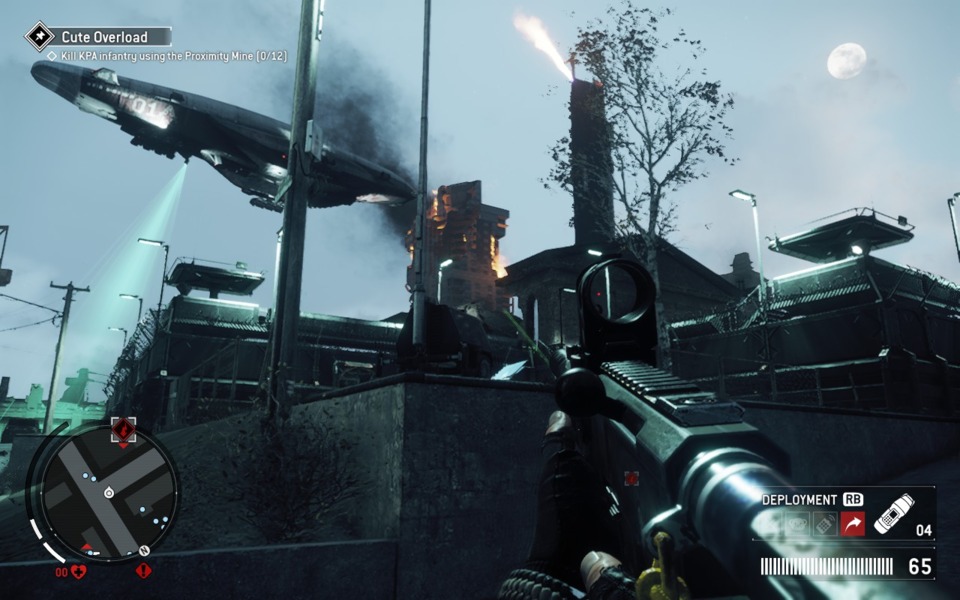
But even if the performance is addressed in patches one day, the game's problems need a deeper fix. All of the tension of the early game decreases as Homefront continues. Once you complete a side mission, the surrounding region of the map turns blue and enemies largely stop spawning there, letting you travel unimpeded through huge swaths of the zone. Combat gets easier (and more avoidable), too. As you earn money and upgrade points, you’ll take less damage, run faster, and be even more difficult for the AI to spot. The problem isn’t upgrading your abilities, it’s that the KPA never does anything to counter this. As far as I could tell, the KPA fielded the same enemy types from the game’s early moments through its lifeless finale. Within five hours, any sense of tension had been replaced by total monotony. What had once seemed like a map filled with dangerous ops turned into a muted checklist. Revolution has never felt this rote.
None of this would matter as much if the story of Homefront: The Revolution was a pulpy romp featuring outlandish heroes and four-color comic book adventures. Unfortunately, Homefront’s story is self-serious, its characterization confused, and its narrative structure sags. As taking over zones get easier and easier, the game’s boilerplate characters shout more and more about how the situation is getting increasingly desperate for the Resistance. The first half of the game spins from one character to another, never letting anyone make much of an impression. Instead, we get familiar cardboard cutouts: Military Action Guy, Angry Punk Chick, Brainy Lady Who Does Machines, Black Pacifist Doctor (he says “I have a dream,” at one point. Seriously, he says it. Out loud. And he’s wrong in the end.) Homefront especially botches a narrative of implied sexual assault and PTSD from just about every potential angle.
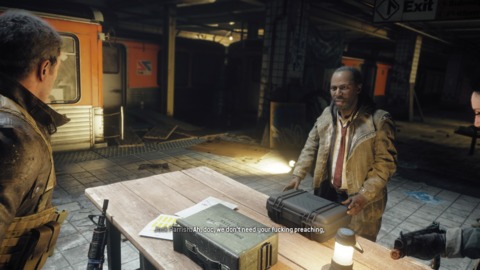
Which isn’t to say that difficult topics should be off limits. Any of these characters, if written with definition, care, and a dash of actual humor, could’ve been solid enough companions through the game. Instead they’re thin caricatures, undercutting any sense of drama or urgency once the supposed drama starts to unfold. Worse, through the first 20 or so hours, I could never tell if I was supposed to think that these characters were naive fools or noble heroes--and this ambiguity isn’t artfully rendered, it’s just whiplash.
Retreating from Homefront’s blustery and boring campaign and into its multiplayer “Resistance” co-op mode doesn’t help much, though. On first blush, a co-op mode makes sense: There is a crowded field of competitive first person shooters, and nothing about Homefront’s action is distinctive enough to separate it from the pack. Unfortunately, it turns out that the co-op field is also pretty crowded these days. Homefront’s handful of multiplayer levels are repetitive, offering none of the surprising randomization that keeps similar co-op experiences like Payday or Left 4 Dead fresh. Likewise, Homefront’s multiplayer mode requires none of the careful teamwork nor does it offer gunplay as enjoyable as Destiny, The Division, or the slept-on Syndicate. The progression structure in “Resistance” is leagues better than that in the campaign, forcing players to make tough choices about character abilities and specializations. Unfortunately, after playing through each of the missions a few times, a lack of content gave me no reason to keep grinding. If only it had a few more levels, maybe it could have kept my attention a bit longer.
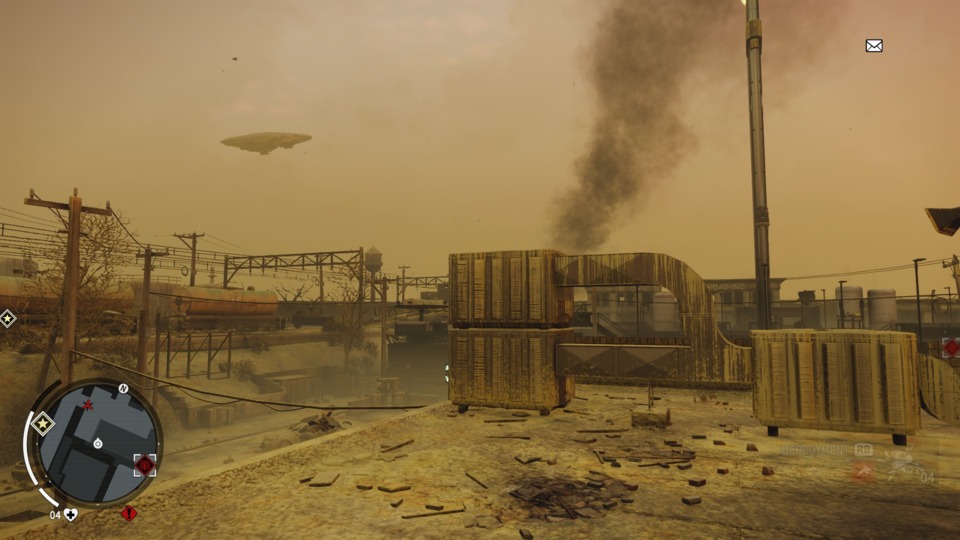
I keep coming back to that desperate phrase: “If only...” It’s a phrase that the Resistance repeats over and over: “If only we had Walker…”; “If only we had a tank…”; “If only we had more people…” Sometimes the pacifist doctor or a pragmatic collaborator chides the group for their simplistic idealism: Shouldn’t we aim for achievable progress instead of impossible utopia? Instead of “If only we had...”, shouldn’t we instead ask “Okay, what do we have and what can we do with it?” This is a debate worth having--after all, it’s a debate that both of the major American political parties have been having internally for the better part of the last year. But despite the game’s earnest tone, Homefront never leaves space for these ideas to be debated narratively or mechanically. Instead, the dissenting voices are shut down and the Hail Mary pass is reaffirmed as the only way forward.
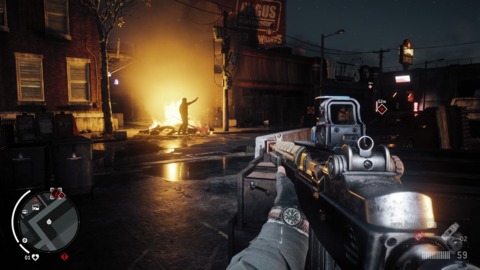
This is how, somewhere along the way, Homefront made me realize how pernicious “If only we had...” is. What comes after that rhetorical salvo doesn’t matter so much: Whether it’s a complaint about leadership, economics, time constraints, or tactics, it’s an oratorical move that reduces a complex problem into something very simple: “If only we could get rid of those people”; “if only we had better technology;” “if only we could go back to the good old days.” It responds to dread by suggesting--demanding--an arbitrary and outlandish fix or a magical solution. This is the first ingredient necessary (though not sufficient) to begin a fascistic movement, which means that Homefront fails even as a hurrah to American Greatness. After all, to the degree that any America--fictional or real--has ever been great, it has not been because of magical solutions. It’s because of the truly difficult work of complicated and fallible people, plus a great deal of luck and timing.
At its fearful root, there’s something hopeful about “if only.” It suggests improvement is possible. And so, I find myself wanting to say my own versions of the phrase. There’s that one striking image in Homefront: The Korean airship, its curved back and sharp nose, a shark skimming a scorched city skyline, a thing of mobile death. And it’s so hard not to say: If only Homefront could do justice to that image. But ‘doing justice’ requires more than one great effort, one great image.
And so other “if only” statements start to roll in: “If only Homefront wasn’t so buggy...”; “If only it was a little more difficult...”; “If only its development wasn’t so troubled…” But there is no single, special solution to the problems that Homefront has. It is a dull game that fails to offer more than passing enjoyment, hitching and glitching all along the way. It offers a middling co-operative mode in a field filled with games trying to innovate in that space. It struggles to say anything--even something bombastic and cartoonish--about crisis, nationality, or revolution. It tries to roar America, but instead coughs out a few, unintelligible grunts.